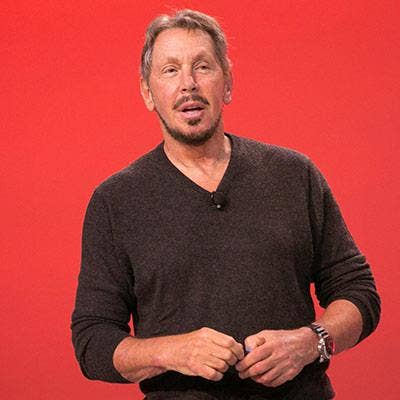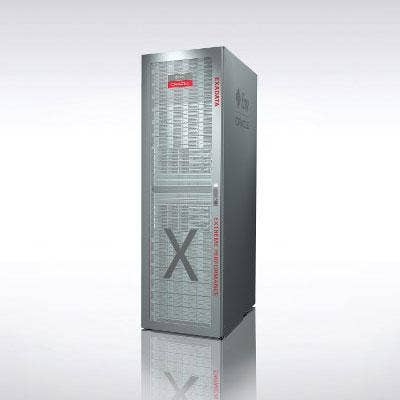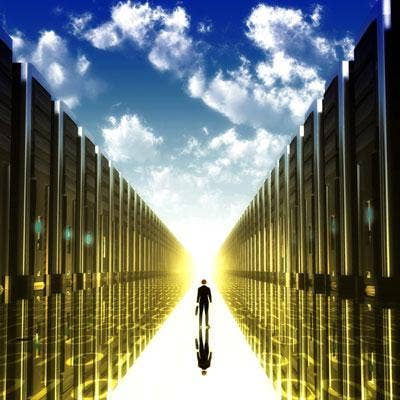Oracle CTO Ellison: 'We No Longer Pay Any Attention' To IBM, SAP

Larry Being Larry
While Larry Ellison took some flak for mocking the term "cloud computing" a few years back, the way he tells it, Oracle under his lead was an early mover in embracing that IT model. More than 10 years ago, the Redwood City, Calif.-based software giant realized it needed to start adapting to the emerging paradigm of delivering remote computing services, he said.
It was then that Oracle made the decision to entirely rewrite all its applications to operate as Software-as-a-Service, around the same time launching Project Fusion, which created the Fusion interface layer for building cloud applications. That decision led a steady progression down the stack.
"We realized if we were going to be in the SaaS business, we also needed to be in the PaaS business," said Ellison, Oracle chief technology officer.
Then came Amazon Web Services, and Oracle realized that if it was doing Platform-as-a-Service, it should also offer raw Infrastructure-as-a-Service. Now one of Oracle's greatest strengths is that it plays at all levels of the stack, with a complete SaaS, PaaS and IaaS portfolio, Ellison said.
In a short keynote Sunday evening at the start of the Oracle OpenWorld 2015 conference, Ellison took the stage at the Marconi Center in San Francisco to share Oracle's design goals when building cloud services, and, in classic Ellison form, take a few shots at the competition.

The Competition
Since Oracle made the decision a decade ago to start preparing for the advent of the cloud era, the competitive landscape has drastically transformed, Ellison said.
Today, in the SaaS market, Oracle competes with Salesforce and Workday and barely ever sees SAP when going after deals, Ellison said.
On the platform side, Oracle competes against Microsoft, not IBM.
And in the infrastructure arena, Amazon is the primary antagonist, not IBM or EMC.
"This is how much our world has changed," Ellison said. Oracle's two biggest competitors over the last two decades have been IBM and SAP "and we no longer pay any attention to either of them."
"It has been quite a shock," he added.

Lowest Cost
It's important for Oracle to deliver its solutions at the best value to the customer, according to Ellison.
Delivering the lowest cost, however, goes beyond just the price it puts on the goods and services it sells, he said.
Oracle's solutions are more affordable for customers for many reasons, according to the CTO.
One source of savings comes from seamlessly uniting many different systems and layers under one vendor, which saves on integration costs. Oracle's solutions also achieve greater worker productivity, saving on payroll expenses, and are highly automated, also minimizing human intervention, Ellison said.
But none of that means Oracle is not thinking about price wars.
"Our plan is to keep matching Amazon's prices, and in some cases, like archival storage, we're going to beat them," Ellison said.

Reliability
Oracle understands that to compete in the enterprise cloud market, it needs to offer systems that pretty much never fail.
Oracle achieves its high standard of reliability through absolute dedication to building fault-tolerant systems. Nothing Oracle architects has a single point of failure, Ellison said.
Reliability is also achieved through automation, which reduces opportunities for humans to introduce errors.

Open Standards
Oracle is embracing open-source technologies such as SQL, Hadoop, NoSQL, Java, Ruby, Node.js. Linux and Docker, according to Ellison.
That introduces great technologies into the ecosystem and reduces vendor lock-in, Ellison said.
While that's all well and good for the customer, it also makes it easier for customers to move their data to competing public clouds.
But Ellison couldn't dream of a reason anyone would want to do such a thing.

Compatibility
Oracle, through its comprehensive suite of solutions, software across the stack and engineered systems, offers unmatched compatibility between cloud and on-premise infrastructure solutions, according to Ellison.
To make it easier to take advantage of that robust portfolio, Oracle has automated the process of migrating workloads from data center to cloud.
After all, customers want to manage all their assets, from their data centers to public clouds, as a single computing resource, Ellison said.
"We will have one to two decades of co-existence between public and private," he said.
On-premise infrastructure is not going to vanish any time soon, according to Ellison.

Always-On Security
Ellison said one huge problem is that most of the security features Oracle gives customers don't get used.
People wouldn't believe how often Oracle realizes that customers purchased security technology, and then never flipped the switch to turn it on.
"Wouldn't it be nicer if they were just always on and always worked and you didn't have to do anything?" Ellison asked. "It sounds impossible. But there's a lot of things we can do."
Security is engineered into every product Oracle releases, at every layer. And Oracle has been working to push security down the stack, so "more pieces of technology inherit the benefits as you go up the stack."
With that philosophy in mind, Oracle has even introduced security to the physical silicon layer.
But seriously, flip the switch and turn your security features on!